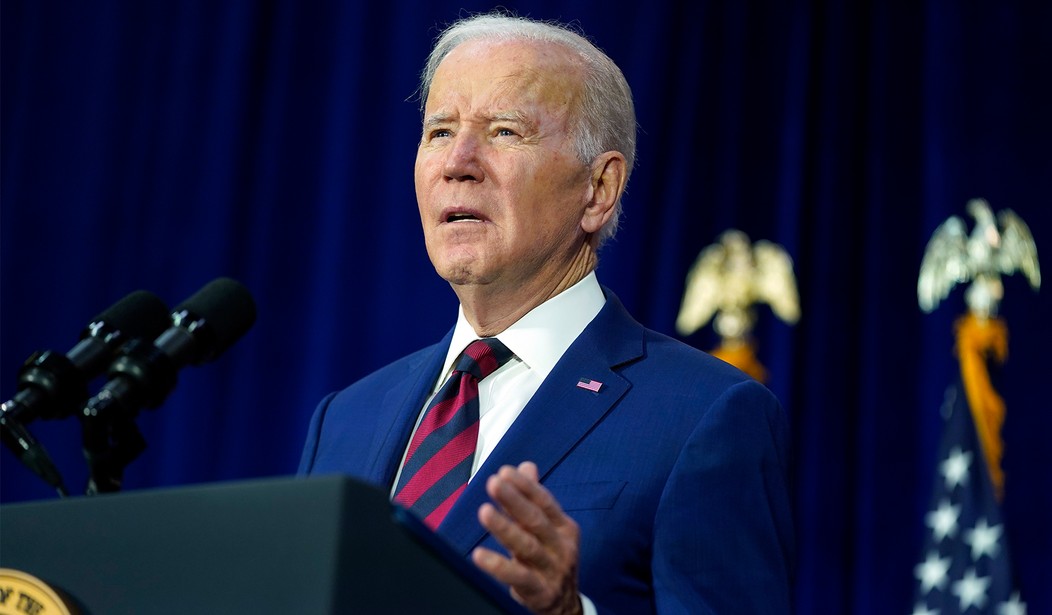President Joe Biden is expected to announce his reelection bid on Tuesday, despite polling showing that even fellow Democrats don't want him to run. It's not just the polling that's not on Biden's side, but The New York Times, which has ramped up its negative coverage of the president.
Last Friday, the outlet published "Biden Has Held the Fewest News Conferences Since Reagan. Any Questions?" This is not a new phenomenon, though, as the low amount of press conferences he had made news in October 2021 as well.
As the piece mentions:
And despite his press secretary pledging that Mr. Biden would “bring transparency and truth back to the government,” in his first two years, the president granted the fewest interviews since Mr. Reagan’s presidency: only 54. (Donald J. Trump gave 202 during the first two years of his presidency; Barack Obama gave 275.)
More than any president in recent memory, Mr. Biden, 80, has taken steps to reduce opportunities for journalists to question him in forums where he can offer unscripted answers and they can follow up. The result, critics say, is a president who has fewer moments of public accountability for his comments, decisions and actions.
...
But those interactions between Mr. Biden and reporters are usually very brief, with shouted questions that the president often chooses not to answer. When he does, it is sometimes with a clipped, one- or two-word response.
...
Mr. Biden has especially shunned interviews with major newspapers. Since taking office, he has not done a single interview with reporters from a major newspaper.
Every president since Franklin D. Roosevelt, with one possible exception, has given interviews to the news side of The New York Times (historians could not locate one by Dwight D. Eisenhower, although they could not rule it out). Likewise, every president going back decades has spoken with The Washington Post.
(Mr. Biden has met with Times columnists, but never on the record. “President Biden invited me for lunch at the White House last Monday,” the Times columnist Thomas L. Friedman wrote in May 2022. “But it was all off the record — so I can’t tell you anything he said.”)
News conferences and interviews always carry risks for politicians, who can perform badly or make gaffes. In the nearly two-hour session last year, Mr. Biden seemed to suggest that a “minor incursion” by Russia into Ukraine would be acceptable, forcing the White House to clean up his comment. In an interview in 2021 with the ABC host George Stephanopoulos, Mr. Biden said there was no way to have avoided chaos during the evacuation from Afghanistan, drawing harsh criticism.
Recommended
It's not perfect, as it still manages to throw shots at former and potentially future President Donald Trump, because of course it does. It also includes statements that send a bit of an interesting kind of message, especially in contrast to claims from White House Press Secretary Karine Jean-Pierre:
White House officials do not dispute their different approach. They say it is part of a deliberate strategy to go around the traditional news media to connect with audiences “where they are,” without being subjected to the filter of political or investigative journalists.
“Our ultimate goal is to reach the American people wherever and however they consume media, and that’s not just through the briefing room or Washington-based news outlets,” said Ben LaBolt, the White House communications director. “The fracturing of the media and the changing nature of information consumption requires a communications strategy that adapts to reach Americans where they get the news.”
As Mia addressed in her fact-check from earlier this month, Jean-Pierre falsely claimed that it was "unprecedented that a president takes as many shouted questions as this president has," doubling down with an "and he has."
This week, the White House claimed that Biden has answered an "unprecedented" amount of press questions, but "Hidin' Biden" frequently dodges Qs and often walks away from questioning reporters.https://t.co/l4AMxGgqcG
— Mia Cathell (@MiaCathell) April 12, 2023
Further, what questions the president has asked, haven't exactly been hard-hitting ones.
Less opportunities to ask critical questions like:
— Chad Gilmartin (@ChadGilmartinCA) April 22, 2023
“How was your trip?”
“How about that crowd?”
“Did you have a good time?”
🤦🏻♂️🤦🏻♂️🤦🏻♂️ pic.twitter.com/AeHqrtSm8l
The very next day, The New York Times editorial board published an op-ed, "Biden Should Take Voters’ Concerns About Age Seriously," the featured image notably including an illustration of the president's aviator sunglasses. It's worth noting that The New York Times was fawning over those same sunglasses last August.
The op-ed references the previous report to double down on, though it's even more damning:
Concerns about age — both in terms of fitness for office and being out of touch with the moment — are legitimate, as Mr. Biden acknowledged in an interview in February with ABC News. His standard line, repeated in that interview, is: “The only thing I can say is, ‘Watch me.’”
But Mr. Biden has given voters very few chances to do just that — to watch him — and his refusal to engage with the public regularly raises questions about his age and health.
The usual White House method of demonstrating a president’s mastery is to take tough questions in front of cameras, but Mr. Biden has not taken advantage of that opportunity, as The Times reported on Friday. He has held fewer news conferences and media interviews than most of his modern predecessors. Since 1923, only Richard Nixon and Ronald Reagan took fewer questions per month from reporters, and neither represents a model of presidential openness that Mr. Biden should want to emulate. His reticence has created an opening for critics and skeptics.
The president also needs to talk about his health openly and without embarrassment, and to end the pretense that it doesn’t matter. Those who are watching him with an open mind have seen a strong performance this year. His State of the Union address on Feb. 7 shattered the Republican attempts to portray him as doddering. With a passion rarely seen at one of these speeches — let alone in his political history — Mr. Biden presented a remarkably effective defense of his presidency and gave a preview of what is likely to be an imminent re-election campaign.
While The New York Times would be considered a friendly outlet, especially as a member of the leftist, mainstream media, it has raised concerns about Biden's reelection before.
Earlier this year, the outlet published a column from Michelle Goldberg, who, although she lauded Biden as a "great president," also said he should not run again. The outlet also published at least two articles last June raising concerns about 2024.
Again, it's not merely The New York Times that is concerned.
The op-ed cites a poll from the Associated Press released that same day, which, although it shows an increase of Americans and Democrats who want him to run, the numbers still aren't great. Just 26 of overall Americans want him to run, and 47 percent of Democrats do.
Also gaining attention is an NBC News poll that was released on Sunday and has gained plenty of coverage. A whopping 70 percent of Americans don't want him to run.
Age is again a cited factor in both factors, including as a "major" factor with the NBC News poll.

























Join the conversation as a VIP Member